|
ID |
Nickname |
Country / City |
Languages |
Taxonomies |
Comment |
Project / Group |
Map |
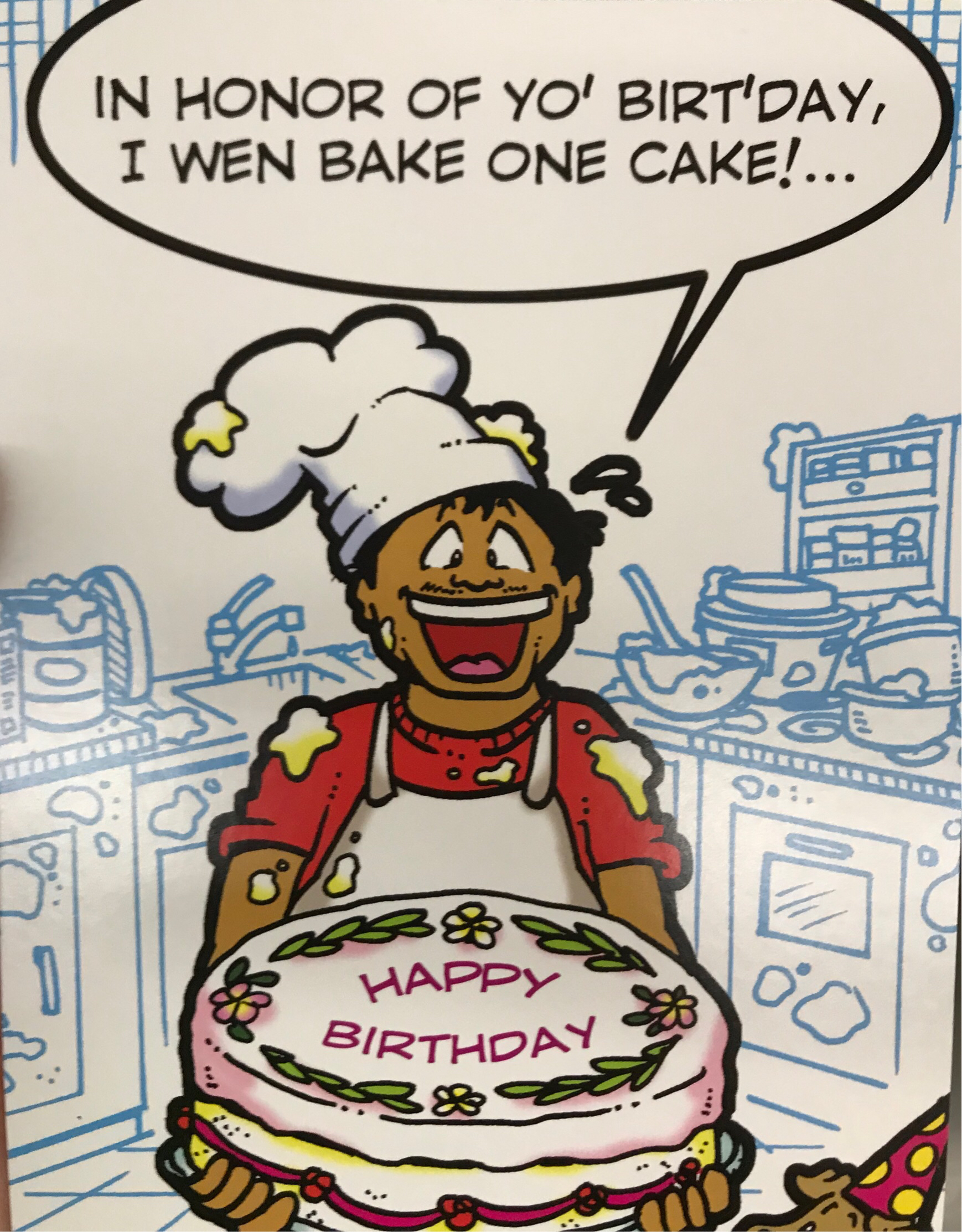
|
25174
|
|
United States
Kapolei
|
|
|
This is a mix of pidgin and english. “I wen bake one cake” is pidgin for “i baked you a cake”. This card could be classified as symbolic-authentic because it establishes emotions when read in pidgin.
|
Multilingual Hawaiʻi
|
|
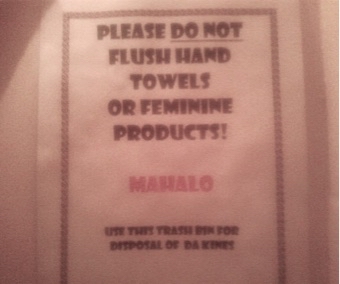
|
38998
|
|
United States
Honolulu
|
|
|
—
|
Multilingual Hawaiʻi
|
|
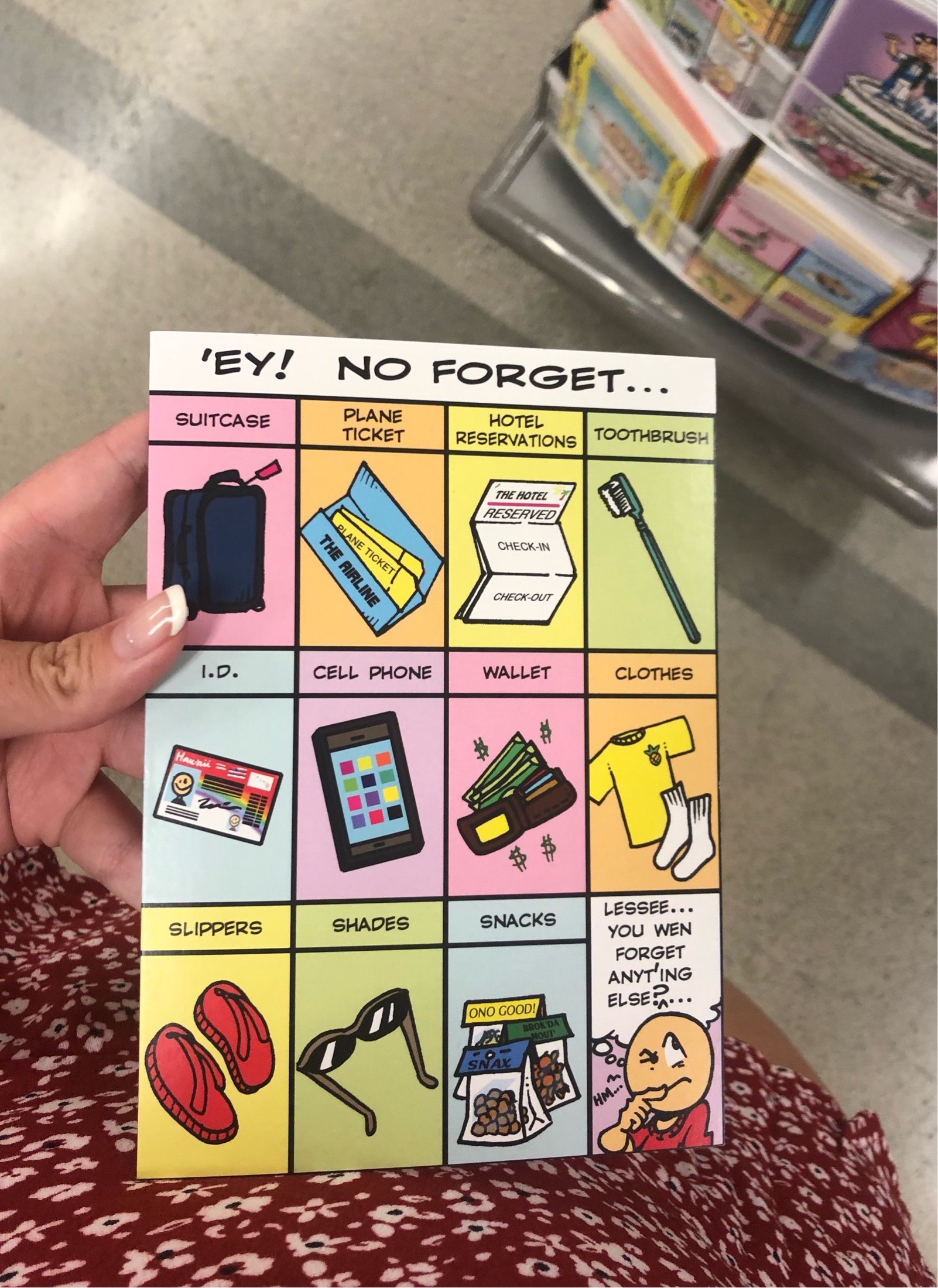
|
44118
|
|
United States
Honolulu
|
|
|
I saw another card in pidgin at target. Super cute and funny cards. GM
|
Multilingual Hawaiʻi
|
|
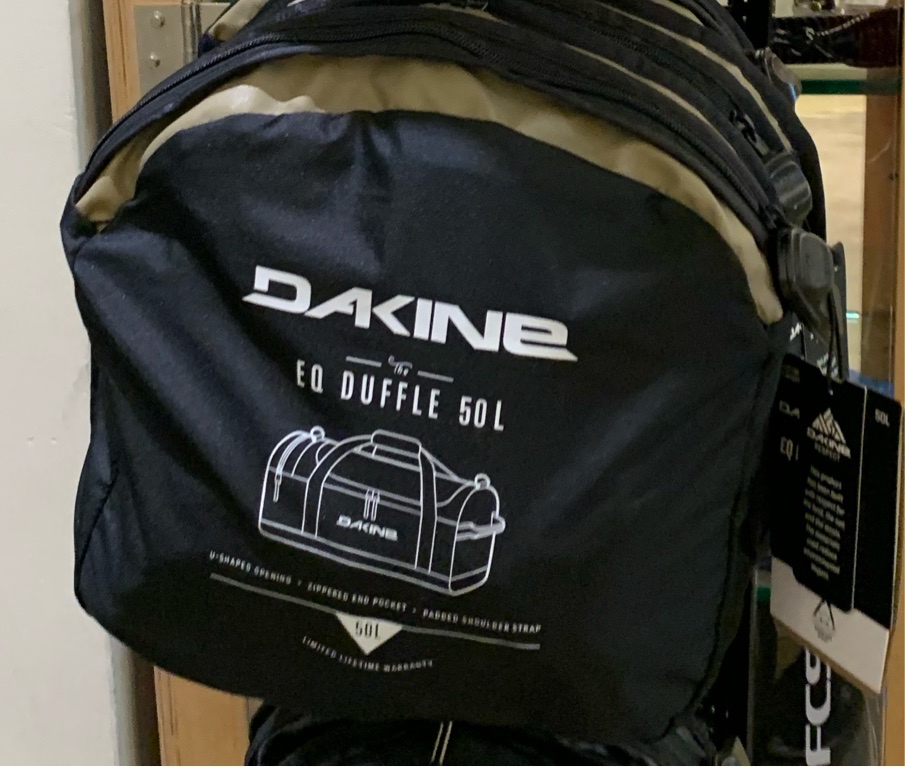
|
46166
|
|
United States
Honolulu
|
|
|
This is an example of Pidgin. It’s on a bag being sold so it’s more a commodity. I’d associate the brand Da Kine more with locals over tourists so it caters more to them. Though is accessible to both
-NIP
|
Multilingual Hawaiʻi
|
|

|
47190
|
|
United States
Honolulu
|
|
|
The domain in this photo is branding. The Hawaiian in this photo is to refer to significant places in Hawaii. For example, Mauna Loa is the name of a volcano and Hana is a place located on Maui. The intended audience is those who want to try Hawaiian-inspired ice cream flavors. It is printed on a cup-like pint. The implied message is that unlike other ice cream flavors this one is special and exclusive to Hawaii. The name of this flavor makes the audience question the connection of “Rocky Road to Hana” and the brand itself. I believe that it is just wordplay. - CQ
|
Multilingual Hawaiʻi
|
|
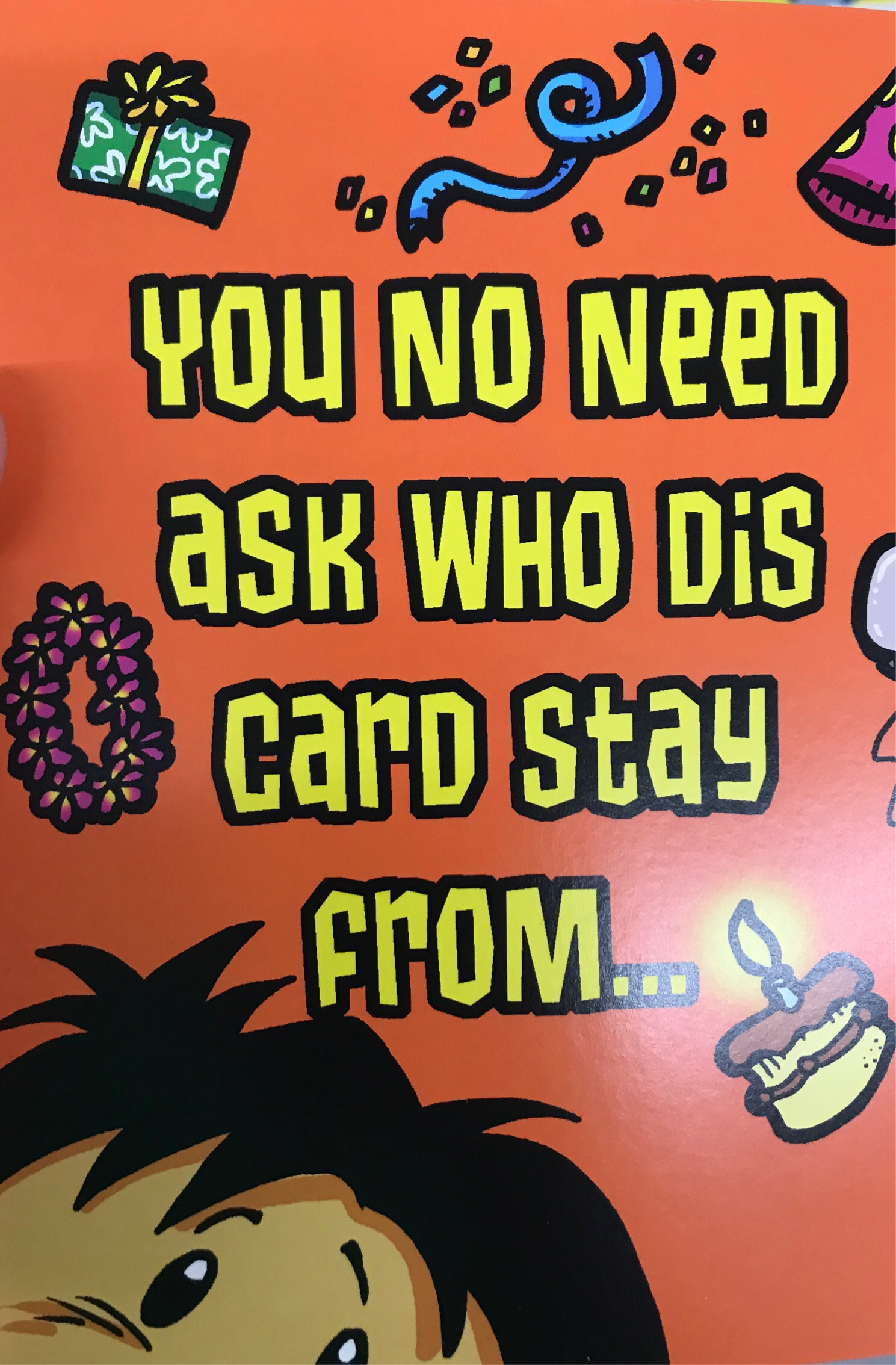
|
25175
|
|
United States
Kapolei
|
|
|
This card is a symbolic-authentic. It is meant to be read on pidgin and would be more used between locals than outsiders.
|
Multilingual Hawaiʻi
|
|
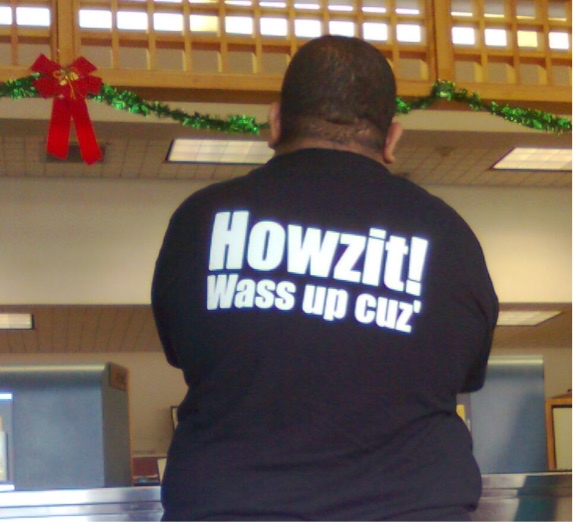
|
38999
|
|
United States
Honolulu
|
|
|
—
|
Multilingual Hawaiʻi
|
|
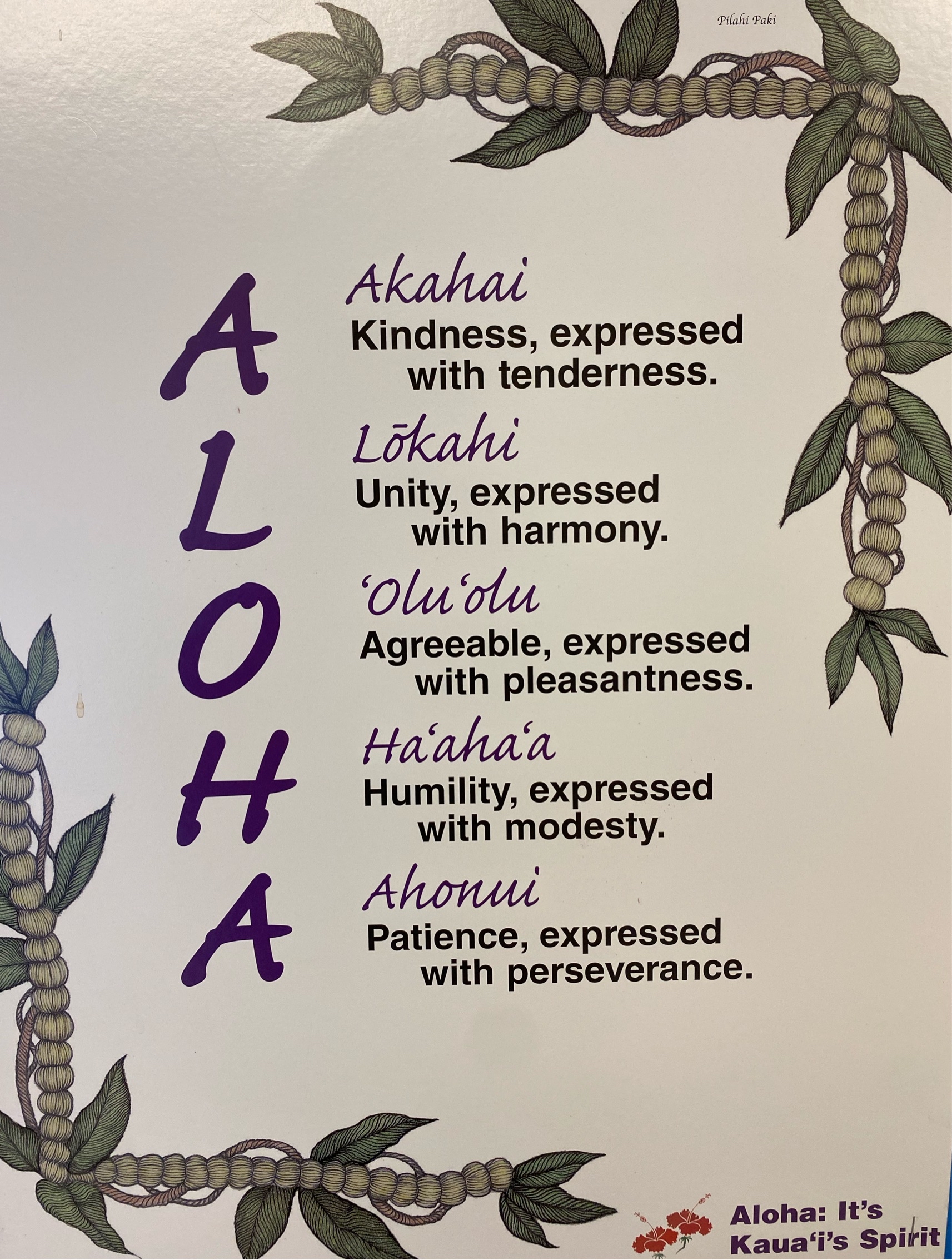
|
44119
|
|
United States
Honolulu
|
|
|
The purpose of using Hawaiian on this poster is to execute the qualities that Oahu’s DPR employees value and showcase in the work field. This is posted up in the district park of McCully. AJR
|
Multilingual Hawaiʻi
|
|
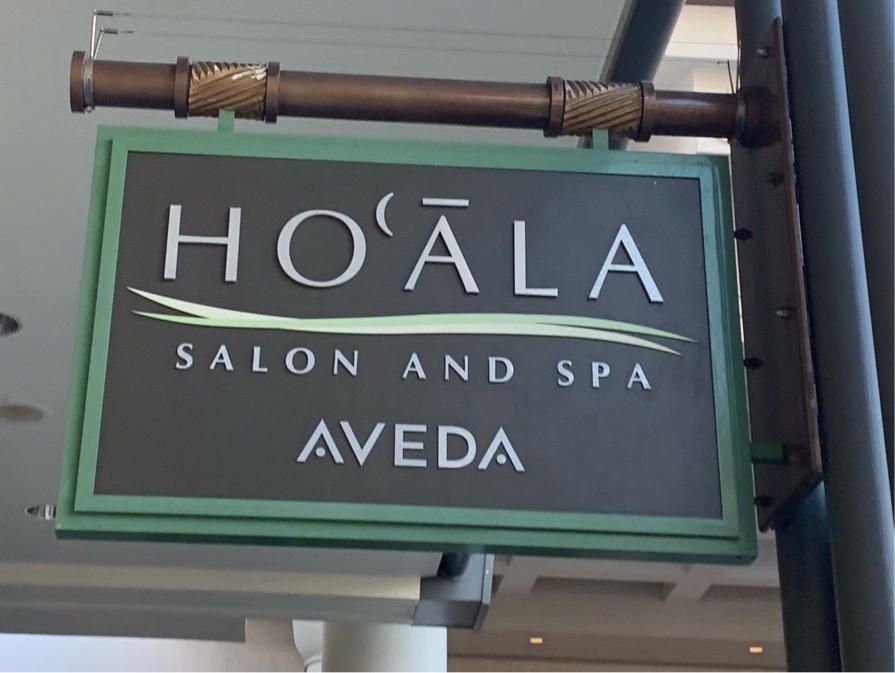
|
46167
|
|
United States
Honolulu
|
|
|
This is an example of Hawaiian. Ho’Āla meaning to awaken, rise up. It’s a sign advertising a spa so it’s more neutral in advertising to both tourists and locals.
-NIP
|
Multilingual Hawaiʻi
|
|

|
47191
|
|
United States
Kaneohe
|
|
|
N.L
https://www.yelp.com/biz_photos/wai%C4%81hole-poi-factory-kaneohe-2?select=bpE8L4F6j3RVgNxbGAMzYQ
This photo is a menu from a restaurant called Waiahole Poi Factory. There are 2 Hawaiian foods named in this menu. Kulolo, a dessert made with taro and coconut. Haupia, which is a coconut based dessert.
|
Multilingual Hawaiʻi
|
|
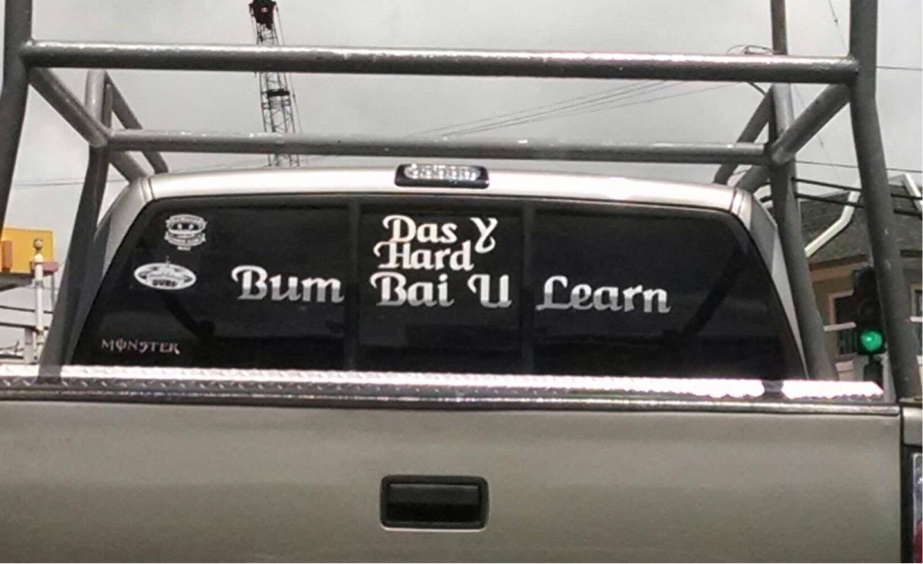
|
39000
|
|
United States
Honolulu
|
|
|
—
|
Multilingual Hawaiʻi
|
|
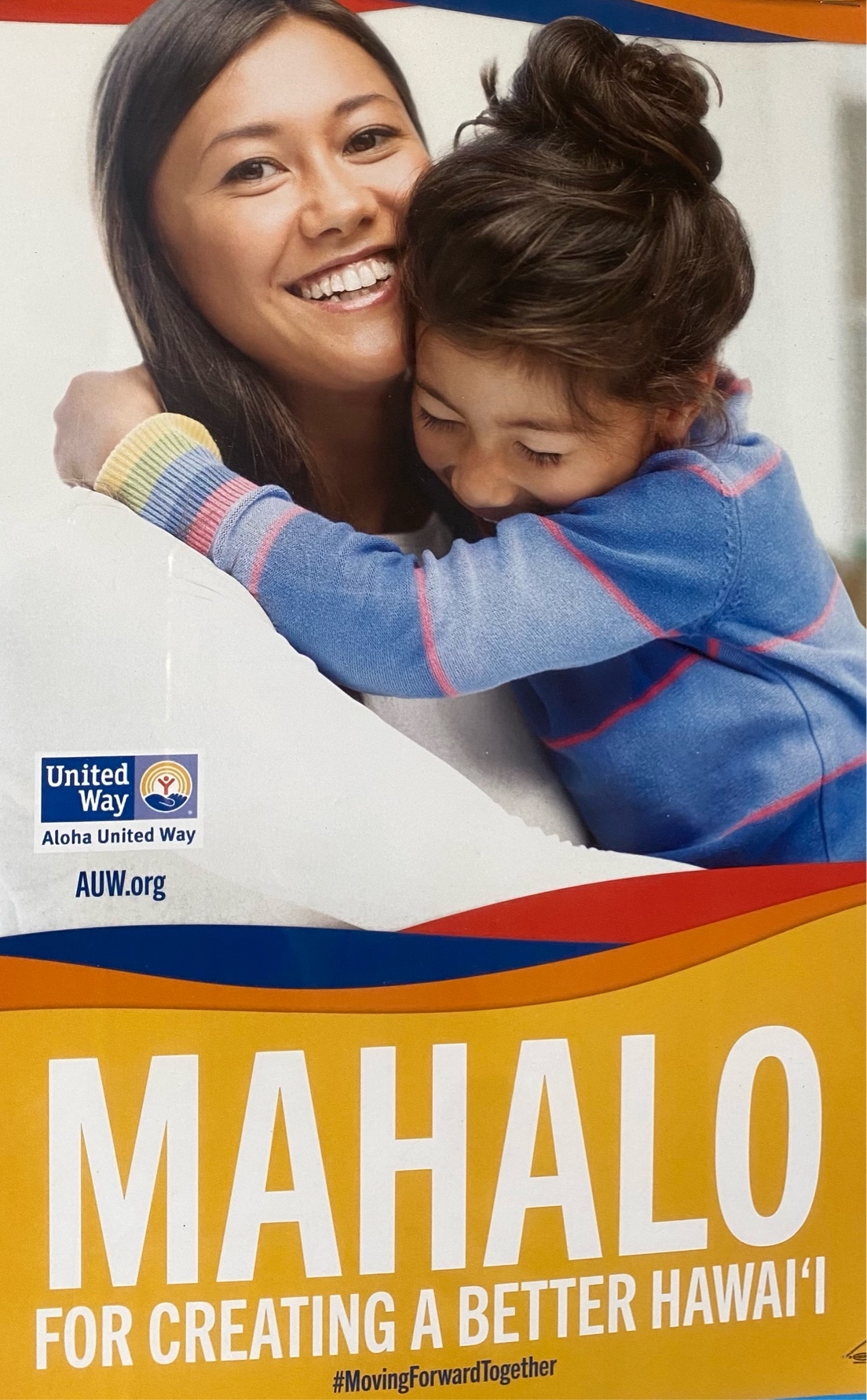
|
44120
|
|
United States
Honolulu
|
|
|
This is a poster in UHM’s Shidler building. The use of Hawaiian in this poster shows that the intended audience is the local community. It also creates a sense of “togetherness”. AJR
|
Multilingual Hawaiʻi
|
|
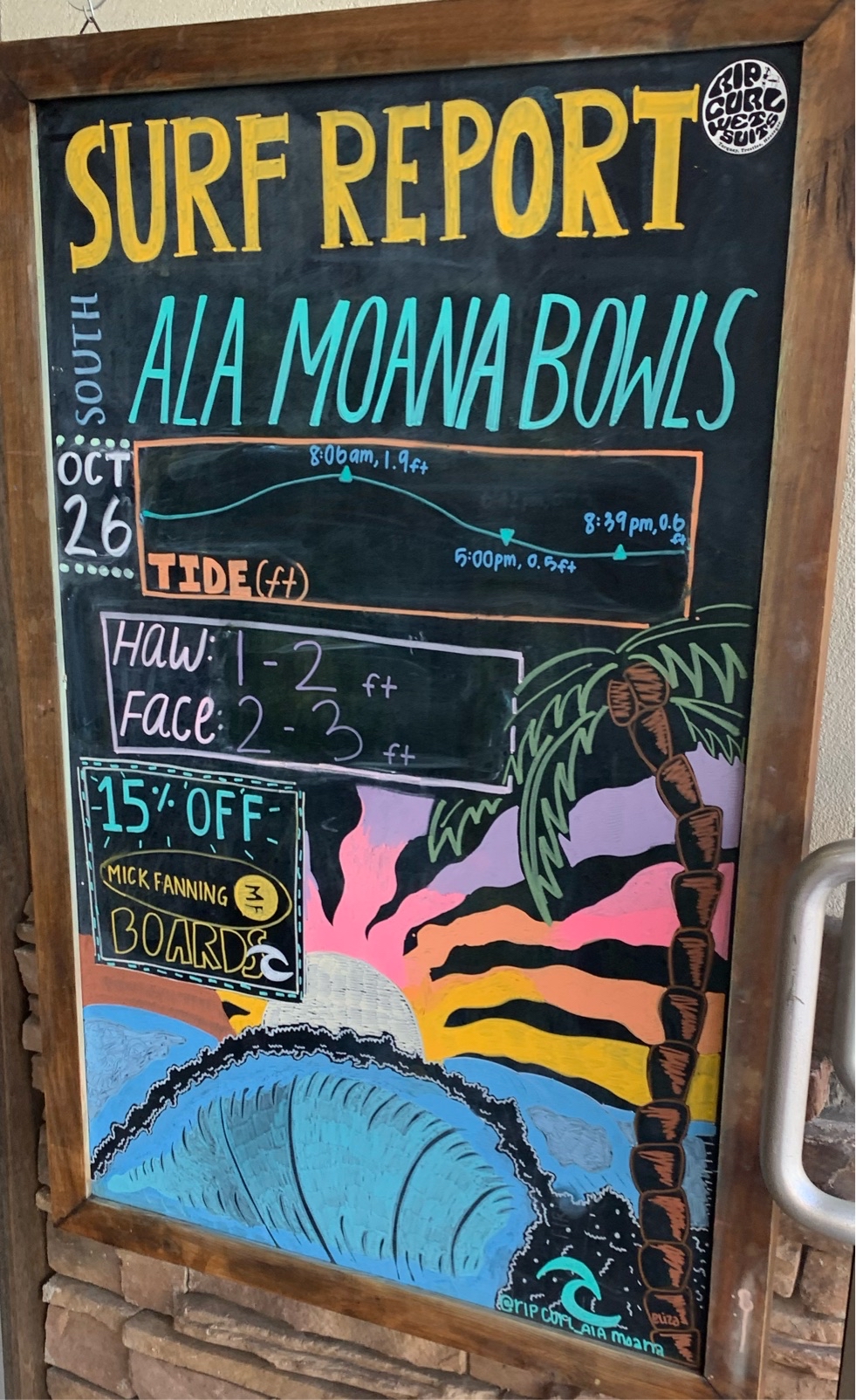
|
46168
|
|
United States
Honolulu
|
|
|
This has English, Hawaiian, and Pidgin. It’s a mock up surf report at Ala Moana Bowls which is a local spot that’s named with its Pidgin. It was outside of a clothing store so it’s probably more for tourists but has a touch of local flavor in the writing to make it more neutral.
-NIP
|
Multilingual Hawaiʻi
|
|

|
47192
|
|
United States
Aiea
|
|
|
EL-S Checkup #3: The languages being used in here are Hawaiian, English and Pidgin. The domain is the food court is located in Downtown Pearlridge. The audience would mainly be locals since the place is called “Rainbow Drive-Inn,” it can attract many locals but many shoppers that are hungry as well.
|
Multilingual Hawaiʻi
|
|

|
38745
|
|
United States
Waipahu
|
|
|
—
|
Multilingual Hawaiʻi
|
|
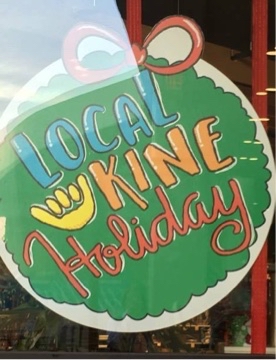
|
39001
|
|
United States
Honolulu
|
|
|
—
|
Multilingual Hawaiʻi
|
|

|
44121
|
|
United States
Honolulu
|
|
|
This is an informative poster that was on The Bus. From the context of the English words used below, I can see that the meaning of “Malama Kupuna” implies putting our elders first, especially on public transportation. This also implies that the intended audience would be the local community, along with foreigners as English is also used. AJR
|
Multilingual Hawaiʻi
|
|

|
47193
|
|
United States
Honolulu
|
|
|
The domain in this photo is branding and commodification. The purpose of using Hawaiian in this photo is to connect the sole purpose of what the book is about which is to teach/learn about Hawaiian. The intended audience is those who are interested in the Hawaiian language and want to learn it. It is printed on card-stock and paper. The implied message of the Hawaiian title directly translated means “the eight seas”. - CQ
|
Multilingual Hawaiʻi
|
|

|
39002
|
|
United States
Honolulu
|
|
|
—
|
Multilingual Hawaiʻi
|
|

|
44122
|
|
United States
Honolulu
|
|
|
This is a public sign showcasing an alarm system. The intended audience would be both locals with a business as well as foreigners as it includes English words. AJR
|
Multilingual Hawaiʻi
|
|